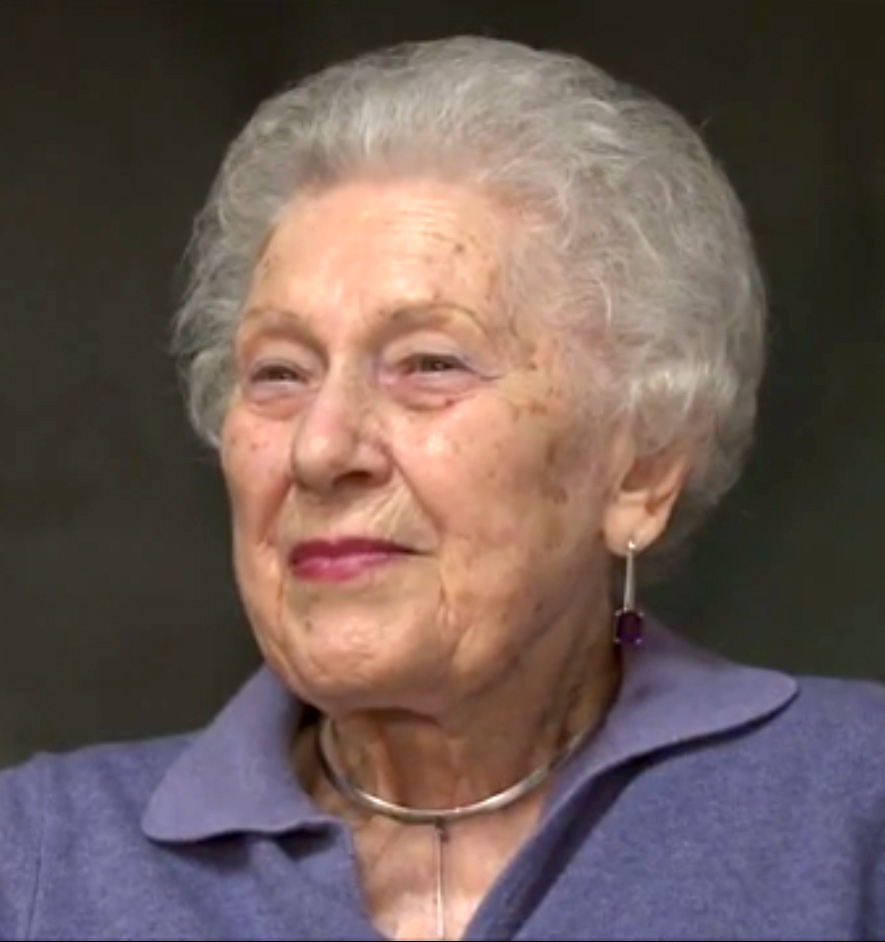We are sad to report the passing of our friend, Manhattan Project veteran Irene LaViolette. She died on May 20, 2016. From defying the Nazis in occupied Greece to her work at Hanford Site, LaViolette had many exciting stories to share about her World War II experiences.
Early Life
Irene LaViolette (born Irene Voutsas) was born in New York City. After she finished kindergarten, her family moved to Greece, where her grandparents lived, due to diminishing economic prospects in the United States. She grew up in Athens and was enrolled in chemistry school when Italy attacked Greece in 1940. With the universities closed due to the war, she became a volunteer nurse at a military hospital.
Working at the hospital was difficult. “It was a very pitiful sight to see the streets of Athens full of wounded soldiers,” LaViolette recalled. “So many of my wounded were amputated. I was there receiving wounded directly from the front. And many times, I wouldn’t even have a day off.”
After the German invasion in April 1941 forced Greece’s surrender, the Germans took over the hospital and wanted the nurses to treat their wounded soldiers. Refusing to assist the occupiers, LaViolette organized a strike among her fellow volunteers. Around this time, she also helped identify a German spy who was disguised as a nun.
LaViolette arranged to return to the United States. This turned out to be fortunate: many years later, her mother revealed that German soldiers had come to their house on four separate occasions looking for her.
LaViolette arrived in New York later in 1941 and enrolled at Barnard College. She graduated in 1943 with a degree in chemistry, and took a job with DuPont’s Electric Chemicals Department Research Lab at Niagara Falls, New York. There, she met her husband Fred, a DuPont physicist and chemist about to be assigned to the Manhattan Project at Hanford. Irene decided to accompany him. The two were married on May 28, 1944. A few days later, they boarded a train, headed west.
Manhattan Project Work
At Hanford, Irene and her husband initially lived in separate barracks until they were assigned a one-bedroom prefab house. She worked in the 300 Area, and was responsible for analyzing water from the Columbia River as well as checking new Geiger counters. Fred worked in the 200 Area on the chemical separation process, helping sealing uranium slugs that were then fed into the production reactors. After Fred completed his work at Hanford, the couple returned to Niagara Falls in March of 1945.
Hanford “was really desert,” Irene remembered, but “we didn’t get bored at all. We would entertain among ourselves, we’d play games of charades, progressive dinners. They would organize square dances and other dances and lectures, mainly on topics of safety and health.”
After the war, LaViolette and her husband started a family. They had two children: a son, Paul, and a daughter, Mary.
Fred LaViolette passed away in 2008. In June of 2015, Irene attended and spoke at AHF’s Manhattan Project Veterans Reunion and Symposium in Washington, DC. You can view video of her remarks on AHF’s YouTube channel (she begins speaking at about 16:30 of the video).
To watch an interview with LaViolette about her life and Manhattan Project work, visit AHF’s “Voices of the Manhattan Project” website.





